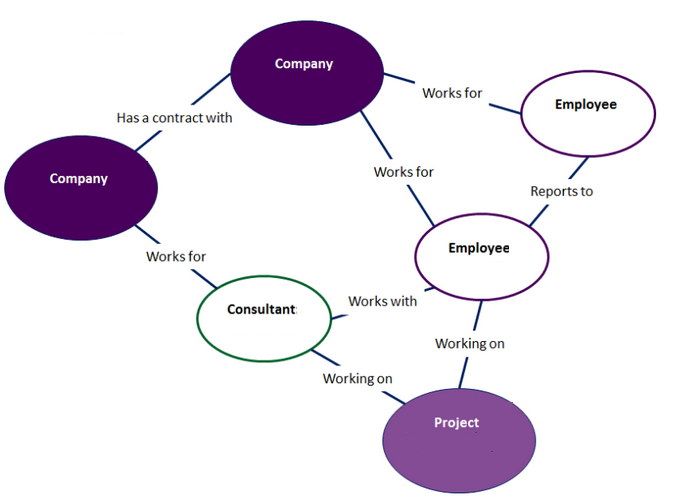With the growing amount of information created every day, effective Data Management is a key business requirement for Data-Driven Organization as a part of a well implemented strategy. Both Ontology and Taxonomy support organizations to access and organize Data more effectively. When information is structured and indexed in a form of ontology and taxonomy, users can find what they need by working down to more specific categories, up to a more inclusive topic, or sideways to related topics. Without Ontology and Taxonomy Organization is, like a library that would be of little use if it failed to organize, classify and catalog its books.
Sometimes, Ontology and Taxonomy are considered interchangeable and used as synonymous. However, they are different concepts that require different tools to manage them. An Ontology and Taxonomy technically two different ways of organizing Data as well as Information.
A Taxonomy makes information accessible. Taxonomy is a knowledge tree, a logical structure that uses hierarchies to classify documents, concepts, etc. Enterprise Taxonomy is typically defined as a classification system that spans the enterprise, including the full range of asset types, the business groups within the organization, and the systems, and tools that support Content Management and Presentation.
Enterprise Taxonomy enables:
- Dynamic Presentation of Content
- Content in Context
- Automation
- Personalization/Customization
- Content Reuse
- More Effective Content Management
- Easier and Cheaper Localization
Taxonomies Structures
Flat Taxonomy has no relationships among the set of controlled categories. All the categories are equal. This is similar to a list; for example, a list of countries.
Hierarchical Taxonomy is a tree structure where nodes are related by a rule. A hierarchy has at least two levels and is bidirectional. Moving up the hierarchy expands the category; moving down refines the category. An example is geography, from continent down to street address.
Poly-Hierarchy is a tree-like structure with more than one node relation rule. Child nodes may have multiple parents. Those parents may also share grandparents. As such, the traversal paths can be complicated and care must be taken to avoid potential invalid traversals: up the tree from a node that relates to the parent, but not to one of the grandparents. Complicated Poly-Hierarchy structures may be better served with a facet taxonomy instead.
Facet Taxonomy looks like a star where each node is associated with the center node. Facets are attributes of the object in the center. An example is Metadata, where each attribute (creator, title, access rights, keywords, version, etc.) is a facet of a content object.
Network Taxonomy uses both hierarchical and facet structures. Any two nodes in network taxonomy establish linkages based on their associations.
Taxonomic Reference Data structures capture information at different levels of specificity. Taxonomies enable content classification and multi-faceted navigation to support Business Intelligence. Taxonomic Reference Data can be stored in a recursive relationship. Taxonomy management tools also maintain hierarchical information.
A well-constructed enterprise taxonomy is central to multiple business functions, including Business Intelligence, Content Strategy and Management, Digital Asset Management, Knowledge Management, and User Experience.
Enterprise Ontology is “a defined model that organizes structured and unstructured information through entities, their properties, and the way they relate to one another”. To further elaborate, It is a representation of knowledge that defines the meaning of concepts and the relationships among different concepts. Think of an Ontology as another way to classify content (like a Taxonomy) that allows you to relate content based on the information in it as opposed to a term describing it. Ontology is the essential knowledge of the operation of an enterprise, completely independent of the ways in which they are realized and implemented. Ontology can include several Taxonomies. You could create an Ontology about your employees and consultants.
According to Bob Bater, “an ontology identifies and distinguishes concepts and their relationships; it describes content and relationships. A taxonomy formalizes the hierarchical relationships among concepts and specifies the term to be used to refer to each; it prescribes structure and terminology.”
Some organizations include ontologies used to manage website content as part of Reference Data. They fit this category in that they are used to characterize other data or to relate organizational data to information beyond the boundaries of the organization. Ontologies can also be understood as a form of Metadata. Ontologies and other complex taxonomies need to be managed in ways similar to how Reference Data is managed. Values need to be complete, current, and clearly defined. Best Practices for maintaining ontologies are similar to those for Reference Data Management. One of the primary use cases for ontologies is Content Management.
Example of Ontology

Key Differences between Taxonomy (Data Model) and Ontology
A taxonomy provides data content classifications for a given concept area. A data model specifically calls out the entity to which an attribute belongs and the valid for that attribute. In an ontology, though, entity, attribute, and content concepts can be completely mixed. Differences are identified through Metadata or other relationships.
In a taxonomy or data model, what is defined is what is known – and nothing else. This is referred to as a closed-world assumption. In an ontology, possible relationships are inferred based on the nature of existing relationships, so something that is not explicitly declared can be true. This is referred to as the open-world assumption.

